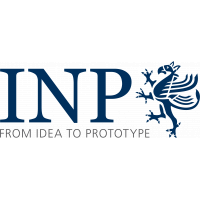Low direct current arcs generated between Cu electrodes in atmospheric pressure air are investigated in relation to low-voltage switching. Electrical and optical measurements and high-speed imaging give insight into the dynamics of the arc. Side-on spectroscopy with a grating spectrometer and suitable optical imaging delivers spatially resolved spectral emission coefficients of three emission lines of the Cu atom. The experimental findings are compared with results from modelling.
| Field | Value |
|---|---|
| Group | |
| Authors | |
| Release Date | 2025-09-12 |
| Identifier | 61406e63-8d71-4d28-a99e-6865c18077fe |
| Permanent Identifier (DOI) | |
| Permanent Identifier (URI) | |
| Is supplementing | |
| Plasma Source Name | |
| Plasma Source Application | |
| Plasma Source Specification | |
| Plasma Source Properties | Electrode configuration under atmospheric pressure air conditions, two cylindrical electrodes made of pure Cu with a diameter of 4 mm and free length of 12 mm aligned opposite each other on a common axis, one electrode fixed, the other electrode movable along the axis with a stepper motor – the gap distance of 3 mm is reached after 50 ms, arc operation with a DC power source consisting of a signal generator Agilent 33220A and an amplifier FM1295 (FM Elektronik Berlin) in the current mode providing DC currents in the range from 0.5 to 20 A and voltages up to 100 V |
| Plasma Source Procedure | The arc is initiated by contact separation, and a constant-rate expansion of the electrode gap is achieved through precise and reproducible motion driven by the stepper motor |
| Plasma Medium Name | |
| Plasma Medium Properties | Open air with a varying admixture of Cu vapour due to electrode evaporation |
| Plasma Medium Procedure | No specific gas treatment, electrode evaporation starts with arc ignition |
| Plasma Diagnostics Name | |
| Plasma Diagnostics Properties | Electric measurements: High-speed imaging: OES: Fluid model: |
| Plasma Diagnostics Procedure | OES: |
| Language | English |
| License | |
| Public Access Level | Public |
| Contact Name | Uhrlandt, Dirk |
| Contact Email |
Data and Resources
- Experimental studies of microarcs between copper electrodes - Fig. 2 (OES 510.6 nm)csv
Related to Figure 2 of the paper: Intensities I(y) of the CuI line at 510.6...
Preview Download - Experimental studies of microarcs between copper electrodes - Fig. 2 (OES 515.3 nm)csv
Related to Figure 2 of the paper: Intensities I(y) of the CuI line at 515.3...
Preview Download - Experimental studies of microarcs between copper electrodes - Fig. 2 (OES 521.8 nm)csv
Related to Figure 2 of the paper: Intensities I(y) of the CuI line at 521.8...
Preview Download - Experimental studies of microarcs between copper electrodes - Fig. 2 (Fit)csv
Related to Figure 2 of the paper: Fits of the measured intensities of CuI...
Preview Download - Experimental studies of microarcs between copper electrodes - Fig. 2 (Epsilon)csv
Related to Figure 2 of the paper: Emission coefficients for the 510.6 nm (...
Preview Download - Experimental studies of microarcs between copper electrodes - Fig. 3csv
Related to Figure 3 of the paper: Radially averaged number density of...
Preview Download - Experimental studies of microarcs between copper electrodes - Fig. 4png
Related to Figure 4 of the paper: Dual imaging with spectral filters for Cu...
Download - Experimental studies of microarcs between copper electrodes - Fig. 4-5 (video)mp4
Related to Figures 4 and 5 of the paper: Video file of the dual imaging with...
Download - Experimental studies of microarcs between copper electrodes - Fig. 5 (intensity)csv
Related to Figure 5 of the paper: Arc intensity (dimensionless) of the Cu I...
Preview Download - Experimental studies of microarcs between copper electrodes - Fig. 5 (voltage)csv
Related to Figure 5 of the paper: Voltage during the contact opening for an...
Preview Download - Experimental studies of microarcs between copper electrodes - Fig. 6 (measurements)csv
Related to Figure 6 of the paper: Measured arc voltage during the contact...
Preview Download - Experimental studies of microarcs between copper electrodes - Fig. 6 (model)csv
Related to Figure 6 of the paper: Results of the model for the arc voltage...
Preview Download

![[Open Data]](https://assets.okfn.org/images/ok_buttons/od_80x15_blue.png)